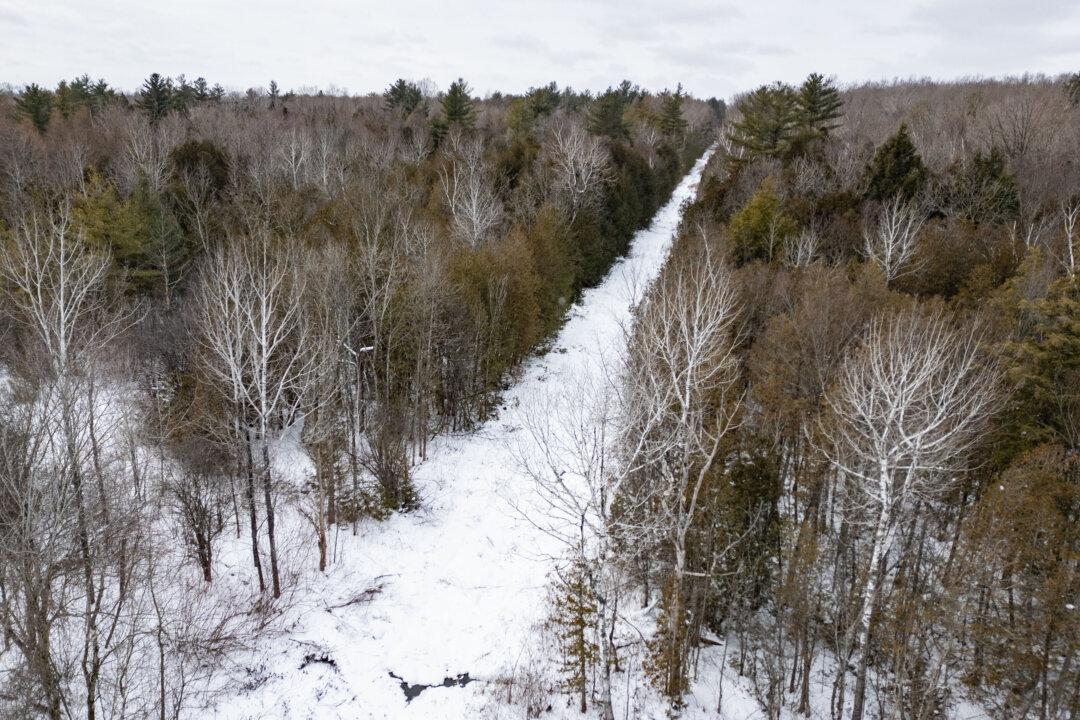Gordon Osinski, a professor in the department of Earth sciences at Western University in London, Ont., said Mistastin was found to be an impact crater in the mid-1970s.
An impact crater is created when an asteroid or meteorite crashes into the Earth, melting and recrystallizing rock through shock waves. One of the unique things about Mistastin, he said, is that it is formed from anorthosite—a light-coloured, highly reflective stone—that makes up large parts of the moon’s surface called lunar highlands.
A Canadian astronaut is to be part of Artemis II, planned for May 2024. This would make Canada the second country to have an astronaut fly around the moon. During the 10-day mission, the crew is expected to set a record for the farthest human travel beyond the far side of the moon. Artemis III, currently set for 2025, is expected to take humans back to the moon’s surface to explore for the first time the region near the lunar South Pole.
Mistastin, also known as Kamestastin, is on the traditional hunting grounds of the Mushuau Innu First Nation. George Rich from the Innu Nation said they welcome the scientists as long as they get the required permission to be on their traditional lands.
A spokeswoman for the Canadian Space Agency said no decisions have been made regarding astronaut training at the moment.
“We’d be happy to support opportunities for the profile and training when the time comes,” Sarah Berjaoui said in an email.
Apollo astronauts trained at Arizona’s Meteor Crater, which at just over a kilometre across, is much smaller than the gaping 28-kilometre-wide Mistastin. Astronauts from the Apollo 16 and 17 missions in the early 1970s trained in Sudbury, Ont., because of its lack of greenery and extensive bedrock, which gave the crew a feeling of being on the moon.
Cassandra Marion, a science adviser at the Canada Aviation and Space Museum in Ottawa who has been to the Mistastin crater six times, described the place as “breathtakingly beautiful.” The crater sits on the tundra-taiga line and is accessible via a cargo plane that lands on one of two airstrips.
It is quiet and its rocks are similar to those found on the lunar surface, she said, but Mistastin differs in several respects, including having abundant blueberry bushes and a lake that is a remainder from the last Ice Age.
Osinski, who has been to the crater twice, said Mistastin could be used to train astronauts in field geology, teaching them how to record observations of a totally new area.
“These are obviously critical, because the astronauts wouldn’t be the ones looking at samples when they come back to Earth,” he said.
“It would be scientists, so making sure they capture all the observations that we need is important.” The Mistastin crater could be a training ground for selecting the best rocks for study and making notes for researchers, he said.
“Faced with dozens and dozens of potential samples, how do we choose the best ones to bring back to answer the questions that the scientists have?”
In September 2021, Canadian astronaut Joshua Kutryk and NASA astronaut Matthew Dominick, a member of the Artemis team, spent some time training at the Mistastin crater where they learned to identify rocks that can be seen on the moon. Most of the rocks are accessible through cliff faces and outcrops, and are millions of years old.
“I’ve been in discussions already about returning this coming September with a bigger group of both Canadian and U.S. astronauts,” Osinski said.
The prevailing theory is that the moon was formed out of debris from when a Mars-sized body struck Earth billions of years ago. The molten surface cooled over time and the lighter rocks known as anorthosite floated to the top, he explained. Those rocks make up much of the lunar surface and give the moon its white shimmer, but they are rare on Earth. Marion said the area where Artemis hopes to land on the far side of the moon in the south polar region is mainly made up of anorthosite.
For all but a select few, Mistastin is about as close to a lunar landscape as it’s possible for a human to get.
The crater that was sculpted about 36 million years ago when an asteroid crashed into the Earth’s landscape is striking, Osinski said.
“You have this magnificent bull’s-eye of this meteorite impact crater. It’s definitely one of the most unique geological sites that I’ve ever been to.”





